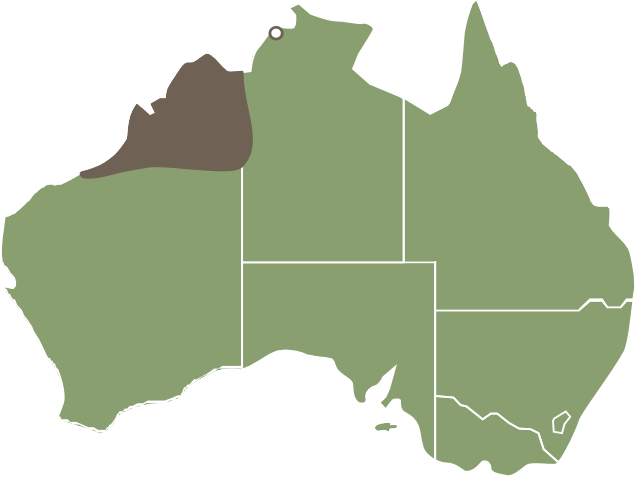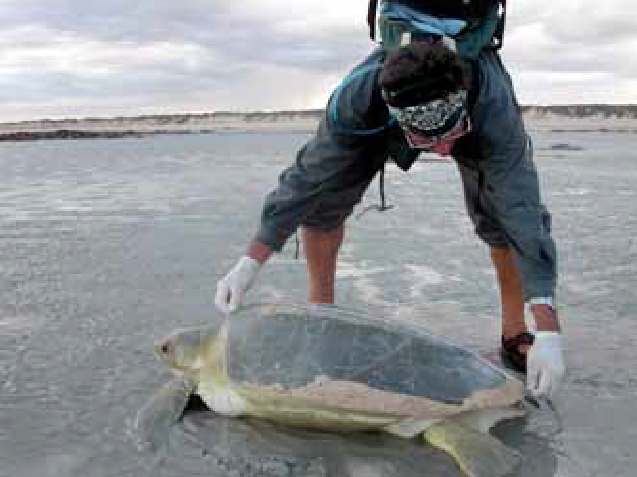The Kimberley
金伯利

The Kimberley provides adventurers with a truly epic experience. It’s here you can take part in one of the last true outback adventures and experience the spectacular scenery along the 660 kilometre Gibb River Road. Search for pearls in Broome, look for birds in one of the most biologically diverse areas on earth or walk through the World Heritage-listed Bungle Bungle in Purnululu National Park. The Kimberley in Western Australia is one of the world’s last great wilderness areas stretching from Broome in the west to beyond Kununurra to the east.
AN OUTDOOR ART GALLERY
The Kimberley has a rich Aboriginal history thoughtto stretch back over 50,000 years, with traditional laws and customs depicted through intricate rock art paintings across the landscape. The world-famous Gwion Gwion rock paintings are an integral part ofthe landscape and are olderthan the Egyptian pyramids.The Kimberley’s dramatic Wandjina paintings, the creator spirits ofthe land, has become an internationally-recognised symbol of Aboriginal Australia and was an important part ofthe opening ceremony ofthe Sydney Olympics in 2000.
ANCIENT AND EXTRAORDINARY LANDSCAPES
The Kimberley is home to extremely diverse landscapes - intricate headlands and archipelagos, deep bays, impressive tidal effects, deep caves and gorges and magnificent waterfalls. The landscape is home to a world-heritage listed site, two National Heritage sites, four wetlands of international significance, 20 wetlands of national significance and 33 parks and reserves.
Rocks and plateaus
The World Heritage listed Purnululu National Park is home to the awe-inspiring 350-mi 11 ion year-old Bungle Bungle -a vast area of beehive like sandstone domesthat rise 300 metres out ofthe earth, creating narrow chasms and hidden gorges. More than 650 types of plants, 130 birds, 81 reptile and 12 frog species live here. In the north of the Kimberley, the Mitchell Plateau and spectacular Mitchell Falls are one ofthe least disturbed ecosystems left in the world and are of great biological importance. The plateau providesa refuge for threatened wildlife such as the monjon.atype ofwallabyandthe black grass wren.
THE KIMBERLEY GOGO FISH - A MISSING LINK IN THE EVOLUTIONARY CHAIN
The ancient tropical reefs ofthe 370-mi I lion year old Devonian era have been laid bare in the Kimberley, and in the 1980’s scientists discovered well-preserved fossils ofthe remarkable gogo fish, the first sea creature to show physical characteristics of life’s journey from ocean to land.
Corges, tunnels and caves
At overthree kilometres long with 300 metre-high walls, the 375-mi 11 io n year old Windjana Gorge in Windjana Gorge National Park contains deep freshwater pools surrounded by native figtrees. The pools are a paradise for a diverse array of wildlife such as parrots, fruit bats and freshwater crocodiles. The gorge is part of the Napier Range, where you’ll also find Western Australia’s oldest cave system in the nearby Tunnel Creek National Park. It’s here you can walk nearly one kilometre into a tunnel and wade waist deep through freshwater pools. This was also the hide out of Jandamarra, the local Aboriginal resistance hero who fought to protect his culture from the devastating impacts of white settlement.
Untouched coastlines
The 400 square kilometre Montgomery Reef is Australia’s largest inshore reef. The roaringtide rushes out in an awesome display of power to expose upto four metres of reef. The reef is home to a rich variety of marine life including fish, crabs, invertebrates, molluscs and sea plants. Turtles, dugongs, manta rays and many species of sea bird also inhabit the area.
The Buccaneer Archipelago contains around 1,000 islands over an area of about 50 square kilometres. At Talbot Bay hugetidal pressure is created by the small gaps between the islands, forcing water to rush through and creating the powerful Horizontal Falls.This environment provides a haven for whales, with the nutrient-rich waters providing important nursery habitat fortheiryoung.
Rowley Shoals Marine Park has some of the best diving and snorkelling sites in Western Australia. Explorethree diverse reefs, home to a variety ofcorals, fish molluscs and other invertebrates and at least 13 species of larger marine animals including sea turtles, manta rays, whales and dolphins.
金伯利
金伯利为探险者提供了名副其实的史诗之旅。在这里,您可以参加一次真正的内陆探险,沿着660公里的吉布河公路饱揽沿途的旖旎风光。您也可以在布鲁姆寻找珍珠,在地球上生物多样性最丰富的区域寻找飞鸟,或者漫步在在被列入世界遗产名录的普努鲁鲁国家公园中的班古鲁班古鲁山脉。这里是世界上最后 的大荒原之一,从西部的布鲁姆绵延至东部的库努努拉。
岩石和高原
壮观的班古鲁班古鲁山脉形成于3.5 亿年前,位于世界遗产名录中的普努鲁鲁国家公园。这座山脉呈巨大的蜂巢砂岩穹顶状,拔地而起300米,内部形成狭窄的裂缝和隐蔽的峡谷。这片区域内有650多种植物、130多种鸟类、81 种爬行动物和12种蛙类。 在金伯利北部,米切尔高原和壮观的米切尔瀑布是世界上现存环境最好的生态系统之一,具有重要的生物学意义。这片高原为濒危野生动物提供了庇护所,比如贝氏岩袋鼠和黑草鹪鹩。
古朴,独一无二的风光
金伯利有着极其多样的景观,比如错综复杂的海角和群 岛、深海湾、令人印象深刻的潮汐景色、深洞穴、峡谷以及壮观的瀑布。这里有一处世界遗产名录景点、两处国家遗产景点、四处国际级湿地、二十处国家级湿地及三十三个公园和保护区。
金伯利古戈鱼——进化链中缺失的一环
在金伯利,有距今3.7亿年泥盆纪时期的古老热带珊瑚礁。在上世纪80年代,科学家们发现了保存完好的古戈鱼化石,这是第一个可以显示生命从海洋到陆地进化之旅的海洋生物化石。
峡谷、隧道和洞穴
温迦那峡谷位于温迦那峡谷国家公园内,谷长超过3公里, 谷深300米,距今3.75亿年。峡谷内有深邃的淡水池, 当地无花果树在池边郁郁葱葱。这些水池是各种野生动物, 如鹦鹉、果蝠和淡水鳄的天堂。峡谷是纳皮尔山脉的一部分, 您还可以在附近的隧道溪国家公园找到西澳大利亚最古老的 洞穴系统。在这里,你可以步行近一公里进入隧道, 涉水于齐腰深的淡水池中。这也是当地土著抗战英雄 Jandamarra的藏身之地,他为保护民族文化免受白人定居者的进犯而斗争。
保存完好的海岸线
400平方公里的蒙哥马利礁是澳大利亚最大的近海礁。汹涌的潮水波涛拍岸,波浪高达4米。珊瑚礁拥有丰富多样的海洋生物,包括鱼类、螃蟹、无脊椎动物、软体动物和海洋植物。该地区还栖息着海龟、儒艮、蝠鲼和许多种海鸟。 海盗群岛约有1000个岛屿,面积约50平方公里。在塔尔博特湾,岛与岛之间的小间隙产生巨大的潮汐压力,迫使水流冲入,形成冲击力极大的水平瀑布。这种环境为鲸鱼提供了庇护所,营养丰富的水域为它们的幼鲸提供了重要的育儿栖息地。 罗利浅滩海洋公园拥有西澳大利亚最好的潜水和浮潜场所。您可以探索三个不同的珊瑚礁,这里有各种各样的珊瑚、鱼类软体动物和其他无脊椎动物,还有至少13种较大的海洋动物,包括海龟、蝠鲼、鲸鱼和海豚。


